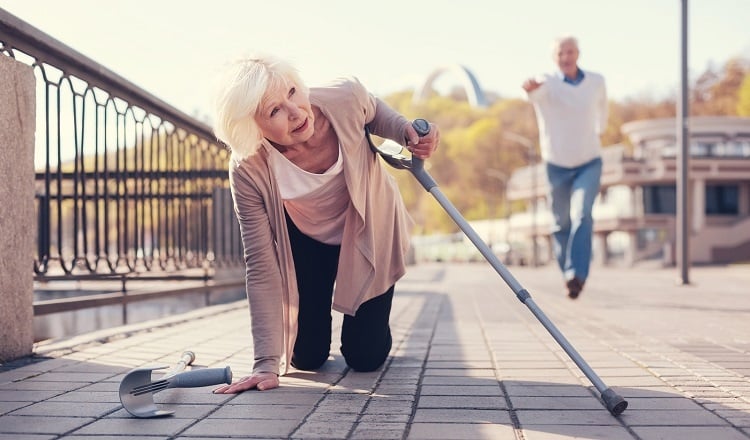Falls are the leading cause of death from injury in seniors. And once a senior falls, it's more likely that they will fall again. However, no matter what your age or fitness level, there are some strategies to reduce the risk from falling, and to lessen the severity of any injuries resulting from a fall. Here is a guide to learn how to fall safely and reduce injury.
Falling Safely
Falling hurts your body, and it certainly your pride. Falling can also result in broken bones or severe head injuries. And while falling is almost always unplanned, it pays to plan ahead and know the best way to fall to avoid serious injury.
Tips from the pros like stuntmen, physical therapists, and paratroopers can significantly reduce your chance of serious injury. Review their suggestions below for safer falls.
1. Loosen up
Tensing up as you sense a fall coming is natural, but it also means you're likely to have a harder impact. Try to exhale quickly and release tension as you start to fall.
2. Bend your elbows and knees
Getting into a near-squat position will make it more likely that you will roll onto your behind or back, rather than a less-cushioned part of the body. Try to avoid falling with your hands and arms outstretched—another natural reaction that will likely increase your chances of breaking a wrist or arm. Also, bending your elbows or knees means that there is some "give" in your body.
3. Tuck your chin to your chest or turn your head away from your fall
If you are falling backward, tucking your chin in to your chest should prevent your head from smacking the ground with enough force to cause a concussion or serious head injury. Likewise, when you are falling to one side, turning your head away from the direction of your fall will help lesson the impact on your face or temple area.
4. Aim to land on muscle, not on bone
The best thing to land on is generally the place where you have the most excess flesh. When it's not possible to land on your buttocks, try to maneuver to the next thickest part of your body. Thighs are better than knees. Biceps are better than elbows. And back fat may be an unflattering, but it can be a saving grace for your spine.
Bonus tip: Keep falling, you're on a roll!
When a fall occurs, the most immediate reaction is to stop falling. But in fact, that can exacerbate any injury. Rather, when you fall, "roll" with the fall to spread the impact over a larger area of your body, thereby lessening the severity on any one part of your body. Martial Arts experts and paratroopers learn to "go with" a fall to reduce the chance of injury.
For more information on fall prevention and how you can be better equipped to help yourself or a loved one, check out our fall prevention fact sheet and learn the steps you can take to help reduce the chances of a fall.


